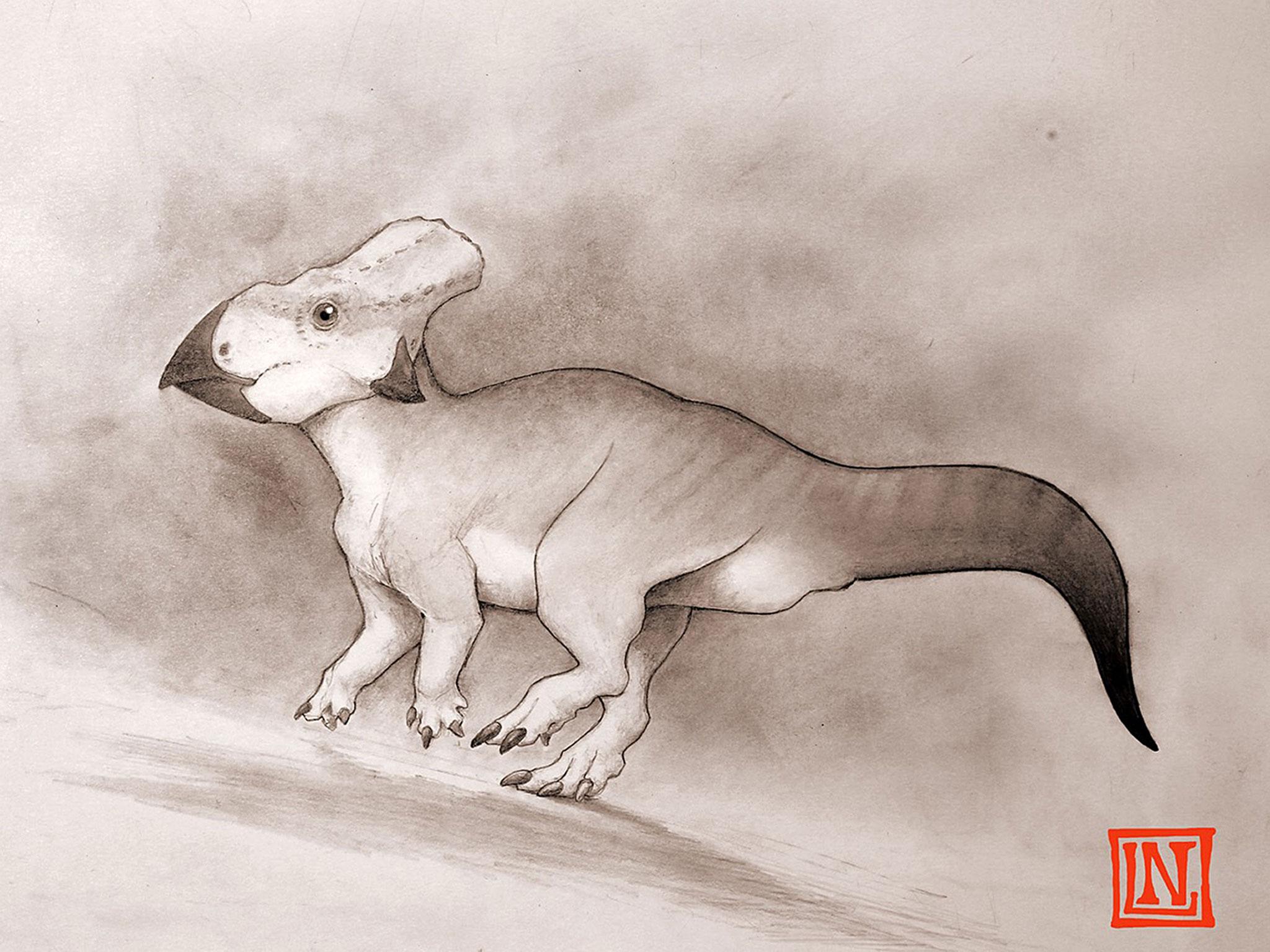Dog-sized horned dinosaur fossil found shows east-west evolutionary divide in North America
Dinosaurs living in the western continent, called Laramidia, were similar to those found in Asia

A British scientist has uncovered the fossil of a dog-sized horned dinosaur that roamed eastern North America up to 100 million years ago.
The fragment of jaw bone provides evidence of an east-west divide in the evolution of dinosaurs on the North American continent.
During the Late Cretaceous period, 66 to 100 million years ago, the land mass was split into two continents by a shallow sea. This sea, the Western Interior Seaway, ran from the Gulf of Mexico to the Arctic Ocean.
Dinosaurs living in the western continent, called Laramidia, were similar to those found in Asia.
However, few fossils from the eastern “lost continent” of Appalachia have been discovered as the areas are densely vegetated, making it difficult to discover and excavate fossils.
Dr Nick Longrich, from the Milner Centre for Evolution based at the University’s of Bath’s Department of Biology and Biochemistry, studied one of these rare fossils.
The fossil, kept in the Peabody Museum at Yale University, turned out to be from a member of the horned dinosaurs, the Ceratopsia.
Dr Longrich was unable to identify the exact species accurately but it had a strange twist to the jaw, causing the teeth to curve downward and outwards in a beak shape.
The jaw was also more slender than that of Ceratopsia found in western North America, suggesting the dinosaurs had different diets and evolved along distinct evolutionary paths.
“Just as many animals and plants found in Australia today are quite different to those found in other parts of the world, it seems that animals in the eastern part of North America in the Late Cretaceous period evolved in a completely different way to those found in the western part of what is now North America due to a long period of isolation,” Dr Longrich said.
His study, published in the journal Cretaceous Research, highlights it as the first fossil from a ceratopsian dinosaur identified from this period of eastern North America.
Join our commenting forum
Join thought-provoking conversations, follow other Independent readers and see their replies
Comments